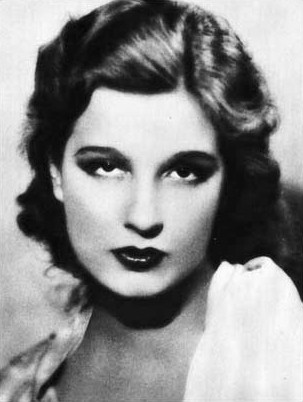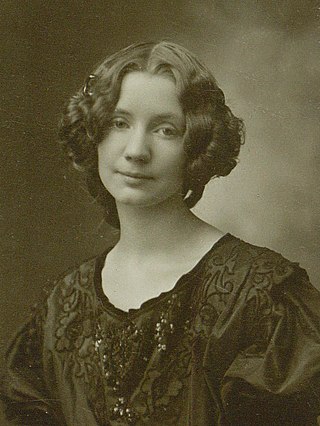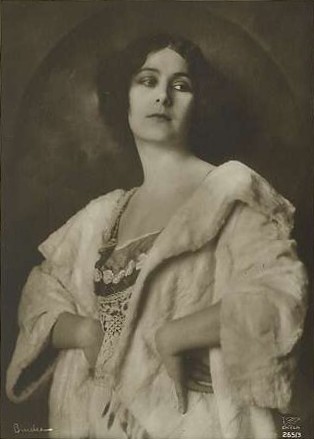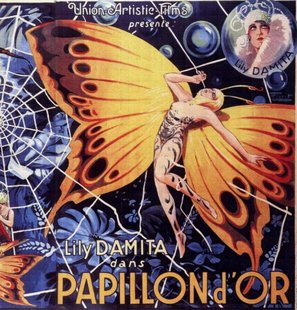
Lili Damita was a French-American actress and singer who appeared in 33 films between 1922 and 1937.

Gerda Marie Fredrikke Wegener was a Danish illustrator and painter. Wegener is known for her fashion illustrations and later her paintings that pushed the boundaries of her time concerning gender and love. These works were classified as lesbian erotica at times and many were inspired by her partner, the transgender woman Lili Elbe. Wegener employed these works in the styles of Art Nouveau and later Art Deco.
Margery Lawrence was an English romantic fiction, fantasy fiction, horror fiction and detective fiction author who specialized in ghost stories.

Sascha-Film, in full Sascha-Filmindustrie AG and from 1933 Tobis-Sascha-Filmindustrie AG, was the largest Austrian film production company of the silent film and early sound film period.

Count Alexander "Sascha" Joseph von Kolowrat-Krakowsky was an Austrian film producer of Bohemian-Czech descent from the House of Kolowrat. A pioneer of Austrian cinema, he founded the first major film studio Sascha-Film in Vienna.

Sodom und Gomorrha: Die Legende von Sünde und Strafe is an Austrian silent epic film from 1922. It was shot on the Laaer Berg, Vienna, as the enormous backdrops specially designed and constructed for the film were too big for the Sievering Studios of the production company, Sascha-Film, in Sievering. The film is distinguished, not so much by the strands of its often opaque plot, as by its status as the largest and most expensive film production in Austrian film history. In the creation of the film between 3,000 and 14,000 performers, extras and crew were employed.
Julius von Borsody was an Austrian film architect and one of the most employed set designers in the Austrian and German cinemas of the late silent and early sound film periods. His younger brother, Eduard von Borsody, was a film director in Austria and Germany. He is also the great-uncle of German actress Suzanne von Borsody.

The Moon of Israel is a 1924 Austrian epic film. It was directed by Mihaly Kertész. The script was written by Ladislaus Vajda, based on H. Rider Haggard's 1918 novel Moon of Israel, which in its turn was inspired by the Biblical story of the Exodus.

Lil Dagover was a German actress whose film career spanned between 1913 and 1979. She was one of the most popular and recognized film actresses in the Weimar Republic.
Emil Stepanek was an Austrian set designer and film architect.
Artur Semyonovich Berger was an Austrian-Soviet film architect and set designer. He was active in Austria between 1920 and 1936, during which time he worked on about 30 feature films. In 1936 he emigrated to the Soviet Union, where he continued to work on films until the early 1970s.

Cab No. 13 is a 1926 drama film directed by Michael Curtiz and starring Lili Damita, Jack Trevor and Walter Rilla.

The Golden Butterfly is a 1926 Austrian-German silent drama film directed by Michael Curtiz, and starring Hermann Leffler, Lili Damita, and Nils Asther. It was based on the 1915 short story "The Making of Mac's" by British author P. G. Wodehouse. The film was released in the United Kingdom as The Golden Butterfly, in a form shortened to 5 reels, and had a limited release in the US under the title The Road to Happiness.

Hertha von Walther was a German film actress. She appeared in 80 films between 1921 and 1983.

Maria Arloisia Fein was an Austrian actress who became a star of German theatre and film before the rise of the Nazis forced her departure. During her time in Germany she was largely associated with the theatrical producer/director Max Reinhardt and acted in plays by such writers as Christian Friedrich Hebbel, Friedrich Schiller, William Shakespeare, Aeschylus, and Ferdinand Bruckner.
The Woman on the Rack is a 1928 German silent drama film directed by Robert Wiene and starring Lili Damita, Vladimir Gajdarov, and Johannes Riemann. It was also known by the alternative title A Scandal in Paris. It was based on a British play by Edward Hemmerde and Francis Neilson. The wife of a British aristocratic politician, who is neglected by her husband, resists an attempt to break them up. When her husband discovers what he mistakenly believes to be a dalliance with another man he begins divorce proceedings. Eventually the truth comes out and the couple reconcile. The film was not considered one of Wiene's greatest achievements, but he was praised for directing with his usual competence while Damita's performance as Lady Admaston was hailed.

The Famous Woman is a 1927 German silent drama film directed by Robert Wiene and starring Lili Damita, Fred Solm and Warwick Ward. It was based on the play Die Tänzerin by Melchior Lengyel, who also wrote the film's screenplay. While performing in Barcelona, a dancer falls in love with a Spanish aristocrat. He proposes marriage to her providing she give up her profession. She agrees and the wedding preparations begin. When her troupe returns to Spain, however, she is drawn back to her true calling as a dancer and her aristocratic lover reluctantly allows her to go free. Damita's performance was particularly praised, as was the cinematography of Otto Kanturek who had done location shooting in Barcelona.
Eric Barclay was a Swedish film actor. Barclay became a prominent actor in French silent films of the early 1920s, often working with director Jacques de Baroncelli. He also appeared in German and British films, and those of his native Sweden.
Theo Shall (1896–1955) was a German stage and film actor. He was born in Metz when it was part of the German Empire but left following its occupation by France following the First World War.
Auguste Lilly Marga Baruch was a German photographer who worked and lived in Berlin in the 1920s.












